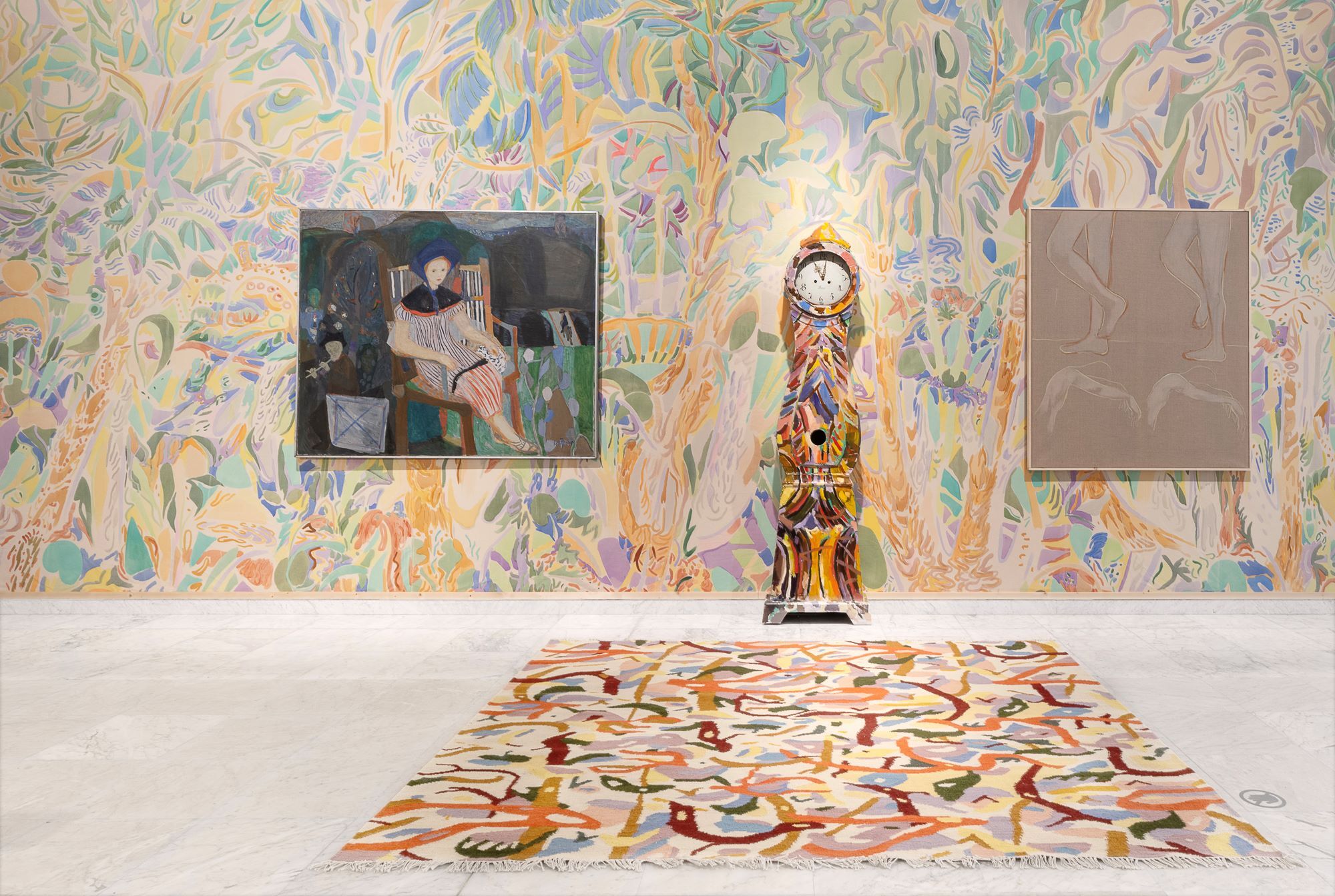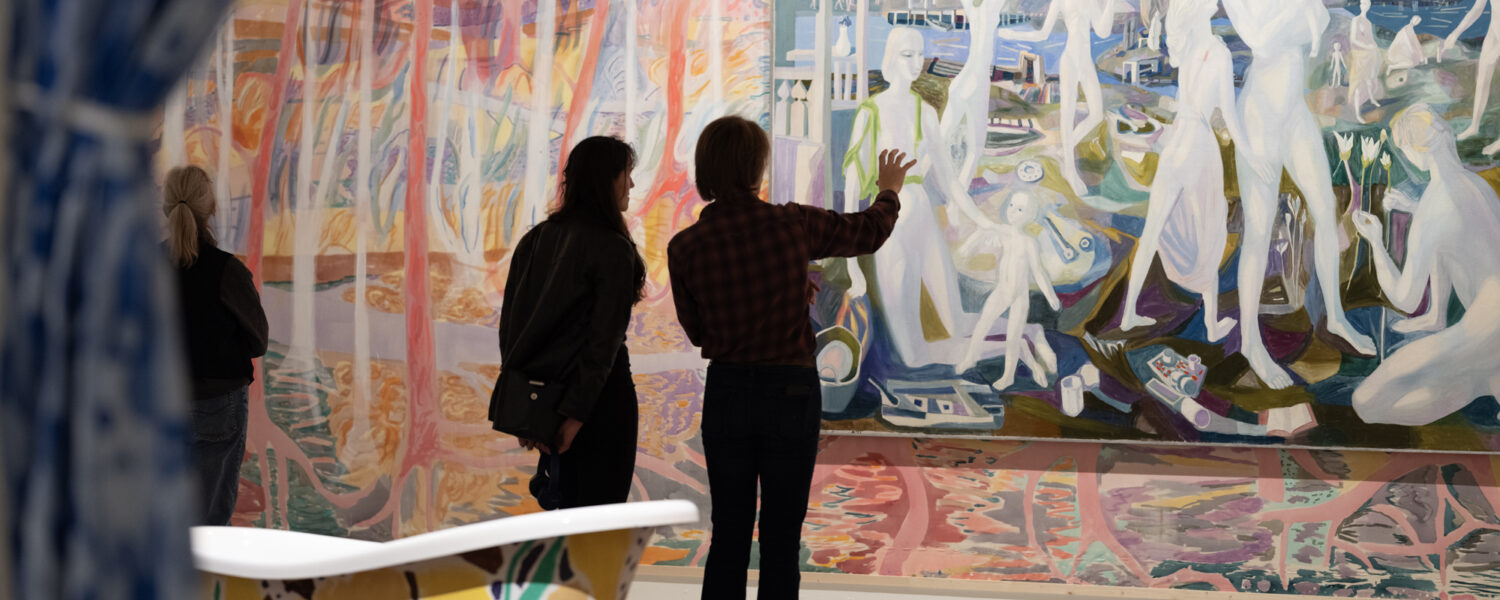The forbidden forest
Andreas Siqueland and the Halvdan Hafsten Collection
Visit the exhibition guide
When Andreas Siqueland (b. 1973) was invited to create new works in connection with artworks from Halvdan Hafsten's collection, he decided to work with the collector and the collector's home as a point of departure for working with the exhibition. Hafsten's residence in Grefsen, Oslo, was the home of the paintings until they were given as a gift to the art museum in Stavanger. In the exhibition The Forbidden Forest/Den forbudte skogen, the space between the private and the public becomes a focal point for examining the various artistic practices and the roles they play today. The exhibition emphasizes that the museum is also a scenographic space where our experience and expectations of place are connected to architecture and location, as well as our own state of being.
Over the years, Siqueland has explored the relevance of painting through landscape painting. He has been particularly interested in the relationship between painting and geographical locations and has investigated how the surroundings influence the artistic process. In larger installations, this relationship is underscored by showing works layered upon each other. These spatial works capture the attention of the viewer, who becomes enveloped by the painting and assumes the role of an actor in a larger landscape. Siqueland has utilized this perspective to illuminate the transformations that take place within and outside of ourselves when the landscape around us changes.
Several artists in Halvdan Hafsten's collection had a strong connection to the place where they grew up or worked as artists. Kai Fjell (1907-89) was influenced by his upbringing in Lier, where the role of motherhood and the relationship between inner and outer spaces were part of his symbolic world. Harald Dal (1902-72) explored cubism in relation to nature in Nesodden, where he lived and worked. Enebakk's farming and forestry environment left a distinct mark on Erling Enger's (1899-1990) subject matter. Thorbjørn Lie-Jørgensen's (1900-61) connection to the archipelago outside Lillesand was the starting point for many of his paintings. Ragnar Kraugerud (1909-87) drew inspiration from his upbringing on the family farm in Tanum, Bærum. In several of Arne Ekeland's (1908-94) political paintings, we recognize the environment in Eidsvoll where he lived and worked. Reidar Aulie (1904-77) was interested in the fate of the individual and often painted situations from an urban space in his hometown of Oslo. Alexander Schultz (1901-81) closely approached the subject, whether it was from Røa, where he lived, or in paintings and drawings from Italy and France.
What do these close relationships mean for us as viewers today? Can the paintings in Halvdan Hafsten's collection tell us something essential about our connection to ourselves and our own surroundings? Perhaps we need to look beyond what is recognizable? The location depicted in the paintings is perceived to be the foundation for the underlying message in the image, which frequently acts as an entryway to a psychological realm. It is such kind of reflections that sparked the inception of this exhibition.
"The Forbidden Forest" challenges the museum's presentation of Halvdan Hafsten's collection. We enter into a larger landscape where the museum's neutral white walls are transformed. Instead of hanging the paintings side by side with explanatory texts, as the museum often does, we are invited into a universe which plays conventional modes of presentation and mediation. The exhibition engages in a dialogue with the sci-fi-like architecture of the gallery space, with its entrance shaped like a glass dome and its large exhibition rooms secluded from daylight with their marble floors and UFO-like light boxes. With the gaze of a sleepwalker, we are taken on a journey where the relationship between time and space, inside and outside, has shifted.




